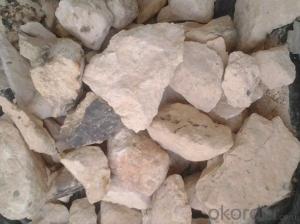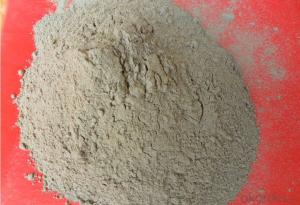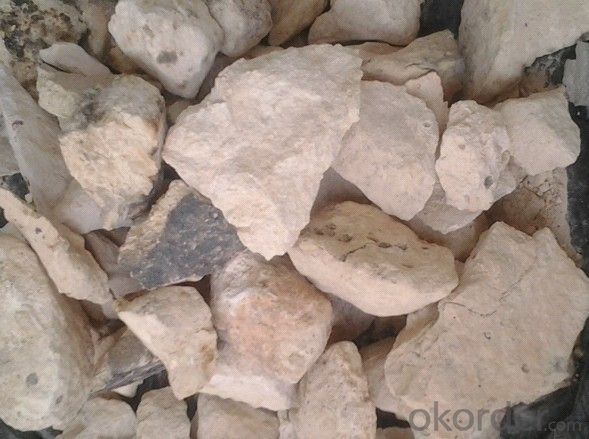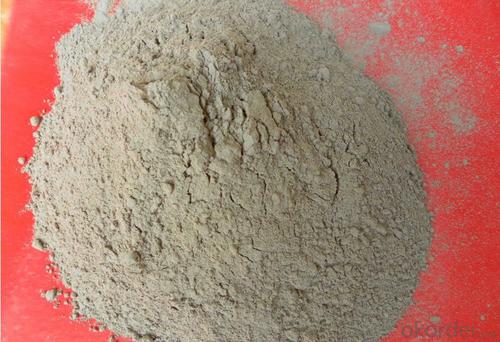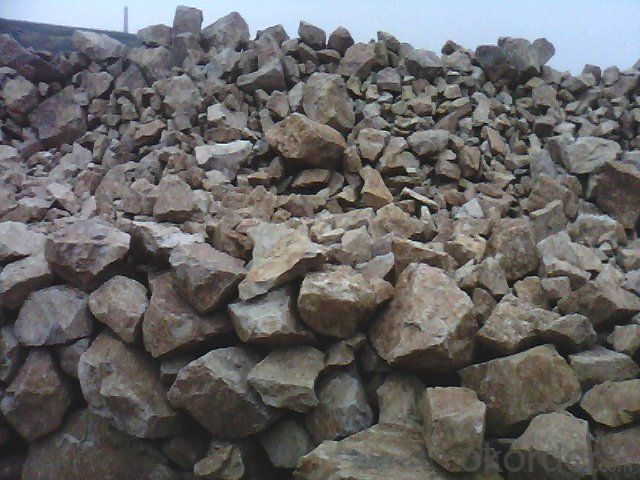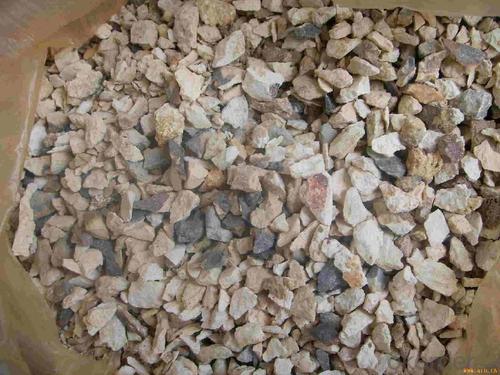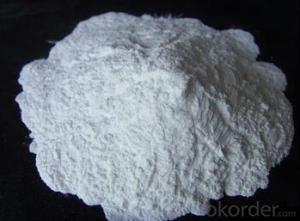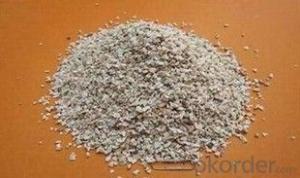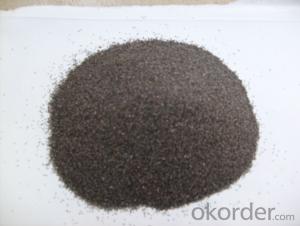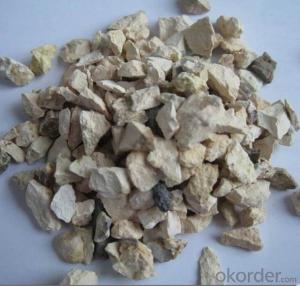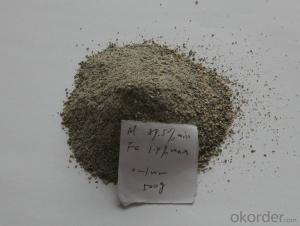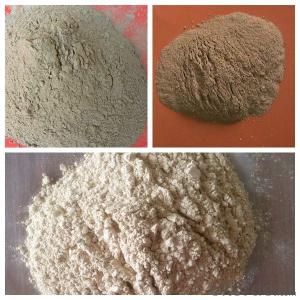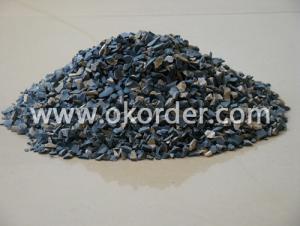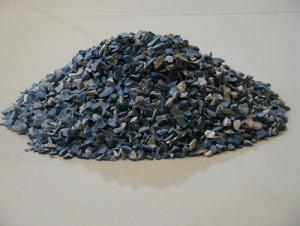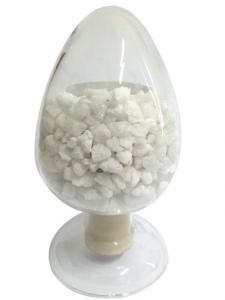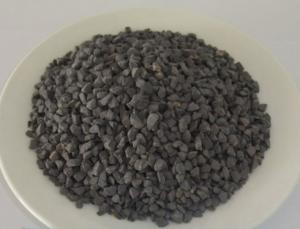Raw Materials for Refractory:Calcined Bauxite Clinker-Rotary Kiln Bauxite
- Loading Port:
- Tianjin
- Payment Terms:
- TT or LC
- Min Order Qty:
- 12 m.t
- Supply Capability:
- 11111111 m.t/month
OKorder Service Pledge
OKorder Financial Service
You Might Also Like
Calcined Bauxite Clinker-Rotary Kiln Bauxite
1.Structure of Calcined Bauxite Description
Calcined bauxite is one of the principal ore of aluminum. Calcined bauxite contains hydrous aluminum oxides and aluminum hydroxides, formed through the laterization of aluminous rocks in tropical and subtropical areas .calcined bauxite is obtained by calcining (heating)superior grade bauxite at high temperature (from 85OC to 1600C) .this removes moisture thereby increasing the alumina content. compared to an alumina content of about 57%to 58%in raw bauxite, calcined bauxite has an alumina content of 84%to88%.the heating is carried out in rotary kilns
2.Main Features of the Calcined Bauxite
Calcined bauxite is one of the principal ore of aluminum. Calcined bauxite contains hydrous aluminum oxides and aluminum
hydroxides, formed through the laterization of aluminous rocks in tropical and subtropical areas .Calcined bauxite is obtained by calcining (heating)superior grade bauxite at high temperature (from 85OC to 1600C) .This removes moisture there.By increasing the alumina content,compared to an alumina content of about 57%to 58% in raw bauxite, calcined bauxite has an alumina content of 84%to88%.The heating is carried out in rotary kilns.
3.Main usage of the Calcined Bauxite
(1) aluminium industry. Used in national defense, aerospace, automotive, electronics, chemical industry, daily necessities, etc.
(2) precision casting. Alumina clinker made after the mould precision casting processed into fine powder. Used in military industry, aerospace, communications, instrumentation, machinery and medical equipment department.
(3) is used for refractory products. High bauxite clinker refractoriness is as high as 1780, chemical stability strong, and good physical properties.
(4) aluminum silicate refractory fiber. With light weight, high temperature resistance, good thermal stability, low thermal conductivity, heat capacity is small and the advantages of resistance to mechanical shock. Used in iron and steel, nonferrous metallurgy, electronics, petroleum, chemical, aerospace, atomic energy, defense and other industries.
(5) in magnesia and bauxite clinker as raw materials, add the appropriate binder, used for pouring ladle whole ladle lining has particularly good effects.
(6) manufacture alumina cement, abrasive materials, ceramic industry and chemical industry can be aluminum of various compound.
4. Calcined Bauxite Images

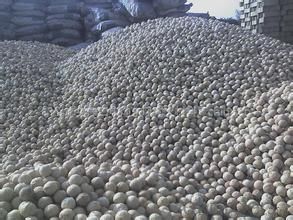
5. Calcined Bauxite Specification
Grade/Item | Chemical composition % | Bulk density g/cm³(min) | Water absorption% | ||||
AL2O3 | Fe2O3 | Ti02 | CaO+MgO | K20+Na20 | |||
GAL-88 | >=88 | <=1.5 | <=4.0 | <=0.4 | <=0.4 | >=3.15 | <=4 |
GAL-85 | >=85 | <=1.8 | <=4.0 | <=0.4 | <=0.4 | >=3.10 | <=4 |
GAL-80 | >=80 | <=2.0 | <=4.0 | <=0.5 | <=0.5 | >=2.90 | <=5 |
GAL-70 | >70--80 | <=2.0 | - | <=0.6 | <=0.6 | >=2.75 | <=5 |
GAL-60 | >60--70 | <=2.0 | - | <=0.6 | <=0.6 | >=2.65 | <=6 |
GAL-50 | >50--60 | <=2.5 | - | <=0.6 | <=0.6 | >=2.45 | <=6 |
6.FAQ of Calcined Bauxite
1). Q: Are you a factory or trading company?
A: We are a factory.
2). Q: Where is your factory located? How can I visit there?
A: Our factory is located in ShanXi, HeNan, China. You are warmly welcomed to visit us!
3). Q: How can I get some samples?
A: Please connect me for samples
4). Q: Can the price be cheaper?
A: Of course, you will be offered a good discount for big amount.
- Q: What is refractory brick?
- Capability1. Refractory brick is also known as firebrick. It is faint?yellow or brownish. Refractory brick with 770 ℃ at high temperatures is called for short firebrick. It is mainly used for building and smelting furnace. It is a refractory material made by fring refractory clay or other refractory material.
- Q: How to distinguish between class A fire resistant door and class B fire resistant door from appearance ? What are the differences between the two refractories? Thank you !
- First, the materials are the same. But the thickness of grade A and grade B fire doors is different juding from their appearances. Grade A :50. Grade B:45. Added question: Do you refer to steel fire door?
- Q: How many grades of fire?rating are there for interior decoration materials?
- It can be divided into construction classification and fire resistance rating. Fire prevention for buildings. Fire prevention measures should be taken in the architectural design to prevent fires and reduce fire hazards to life and property. Building fire protection includes two aspects: fire prevention before fire disaster and measures in fire disaster, among which the former is mainly to confirm the fire resistant rating and fire-resistant structure.
- Q: What kinds of fireproof materials does the safe use?
- The fireproof materials of safe, copper is one of the most widely used material of locks for its good mechanical performance, corrosion resistance and processibility and beautiful colors.
- Q: Who can tell me the properties and classification of insulating refractories?
- Bubble method. This method is the foam agent in a frothing machine mixing with water and prepared uniform fine foam, the foam added in common mud mixing into the foam slurry injection model, together with the drying, demoulding, at 1320 DEG C to 1380 DEG C (high alumina insulating refractory brick for burning) after processing, the plastic products.
- Q: What kind of materials are needed to make refractory bricks?
- Fubang Decoration of Anhui province help you with the question: According to requirements, there are different materials, acid refractory material, such as silica bricks; neutral refractory material, such as high alumina brick; and basic refractory material such as magnesia brick.
- Q: Is there a worker in (Jigang refractory plant)?
- Exactly, you are not in the strict sense of the refractory plant contract worker, your contract is not signed and refractory plant, your wage system, and the worker in the factory is not the same, you can not follow the normal off-duty execution system
- Q: What are the main materials in concrete fireproofing material?
- it can be roughly divided into: fire-resistant coating for steel structure, finishing fire retardant paint, tunnel fire coatings, concrete fire?retardant?coating, cable refractory coating. fire-resistant coating for steel structure is divided into: Indoor ultra-thin fireproof coatings for steel structure, indoor thin steel structure fireproofing coating, indoor thick steel structure fireproofing coating, outdoor ultra-thin fireproof coatings for steel structure, Outdoor thin steel structure fireproofing coating, outdoor thick steel fireproofing coating. I hope it can help you. Hope to adopt my opinion Thank you! )
Send your message to us
Raw Materials for Refractory:Calcined Bauxite Clinker-Rotary Kiln Bauxite
- Loading Port:
- Tianjin
- Payment Terms:
- TT or LC
- Min Order Qty:
- 12 m.t
- Supply Capability:
- 11111111 m.t/month
OKorder Service Pledge
OKorder Financial Service
Similar products
Hot products
Hot Searches
Related keywords
